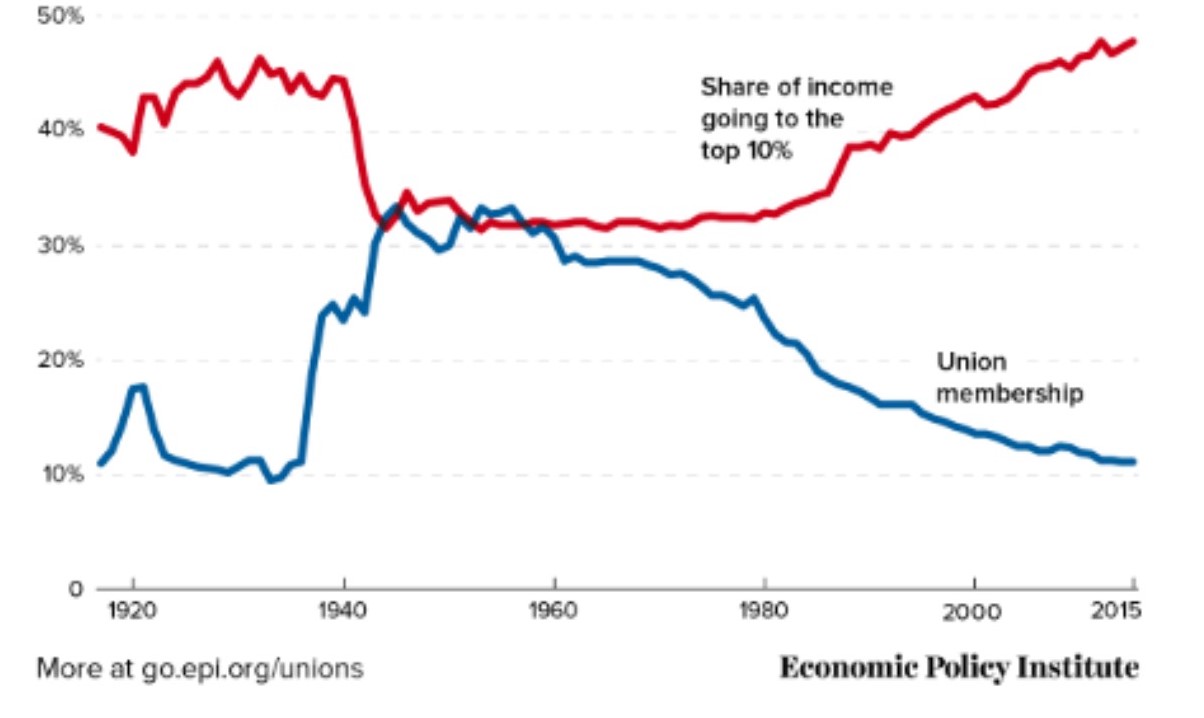|
Being part of a Union is something many of us have a tendency to take for granted. After all, we work in an environment where membership has been a certainty for many decades. For this reason, it is important to reflect on the value of Union membership and the differences when compared to non-Union wage earners, lest we take for granted that which our predecessors fought hard to obtain.
Recent data released by the U.S. Department of Labor – Bureau of Labor Statistics (BLS) reveals median weekly earnings for Union members remain approximately 20% higher 
than non-Union workers ($1051 versus $860).[1] While this may seem a relatively large gap, it is even more profound when one considers the average benefit cost paid by employers for a Union employee versus non-Union. A study conducted by the BLS over a ten-year period revealed the difference between employer benefit contributions for Union members compared to non-Union members increased each year. By the final year of the study, employers were contributing nearly twice as much to benefit packages for Union members as non-Union members ($14.67/hr.and $7.56/hr, respectively).[2] Additionally, there has been much research to suggest the gap would be even wider if not for the positive impact Union wages have on non-Union wages within the same industry/geographic region. Simply put, non-Union employers must aggressively offer better wages to compete with Union employers in tight labor markets, as well as deter existing labor forces from organizing.
Given the data above, one might be inclined to wonder why the percentage of U.S. workers belonging to a labor Union has steadily decreased over the past several decades. That percentage has been cut in half over the last 30 years and now stands at roughly 10% across the country – 5% in the private sector. While we remain a part of that small percentage of workers who benefit from representation, the positive effect on our non-Union counterparts is rapidly vanishing, leading to the wage stagnation and obliteration of the middle class we are seeing in our country today. The following graph provides some insight into one of the reasons for the decline. The graph demonstrates the causal relationship between CEO earnings (among others in the top 10%) and the percentage of Union workers over the last 100 years.

As you can see, there is a great financial motivation for rich corporations and their CEOs to suppress Unionization efforts at all costs, which is why they fund anti-Union propaganda and such initiatives as right-to-work legislation. As our numbers go down, their percentage of the pie goes up.
While we may not be able to control all aspects which have led to a decrease in Unions in our country, there are some things we can do to have a positive impact and that begins with understanding the value of membership. The pride this instills in us should prompt us to get more involved in our Union, spread the message of solidarity in the communities where we live, speak out when our State legislators attempt oppressive right-to-work (for less) legislation, and get involved in organizing efforts wherever possible. We can make a difference – a little bit at a time.
[1] Bureau of Labor Statistics report USDL-19-0079 dated 1/18/2019
[2] BLS monthly labor review – April 2013
|

